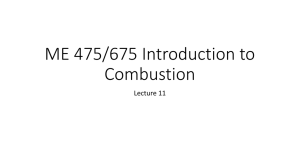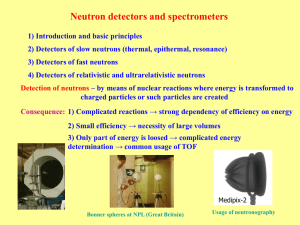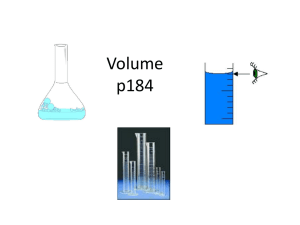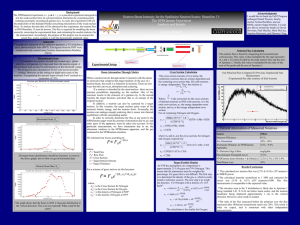Average path length for neutrons from point source into cylindrical
advertisement
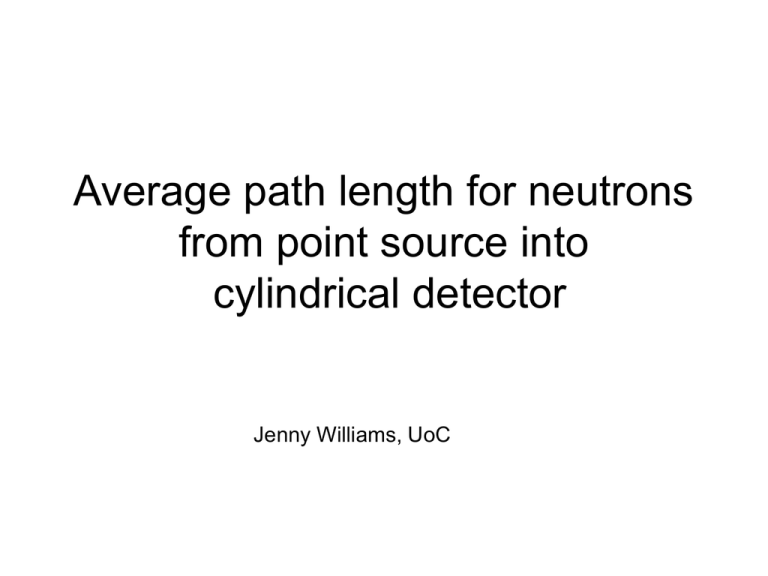
Average path length for neutrons from point source into cylindrical detector Jenny Williams, UoC The problem 60.5cm Neutron point source 4.5cm 50cm • Neutrons from approx point source into cylindrical detector • Want to know average path length of a neutron through the detector • As a first example, we’ll assume a uniform flux of neutrons from the point source (flux-included calculation follows) Path length through cylinder • Need to find average length of all possible paths through cylinder - average of dotted lines • Slightly different formula for neutrons exiting back endface (easy to deal with) Total number of neutron paths through cylindrical detector • Number of paths proportional to area of front endface the neutrons go through • Path length, f(r), is a function of radial distance r from centreline that neutrons enter the detector – 50cm at r =0, and 0cm at r =4.5cm • At radial distance r, number of paths is proportional to area contained in annulus of radius r, and thickness dr. For each annulus, calculate: number paths X length of path This is equivalent to: area of annulus X length of path Normalise by dividing by the total number of paths – i.e. divide by the area of the endface of the detector. r dr Detector front endface Calculation of average path length R 0 f (r )2 rdr R 2 Path length at r times area of annulus at r Total area of cylinder endface r is radial distance from cylinder centre where neutron enters cylinder R is radius of cylinder f(r) is path length through cylinder for a neutron entering cylinder at radial distance r from centreline. Non-uniform flux at cylinder endface Flux profile takes account of source not being entirely point-like Have flux profile at 55cm – small attenuation with r Beam enters cylinder at 60.5 cm Reasonable approximation to flux non-uniformity 55.5 cm Average path distance formula becomes: R f (r ) h(r )2 rdr 0 R 0 h(r )2 rdr Where h(r) is a Gaussian fitted to the 55cm beam profile to represent the non-uniform flux of neutrons entering the detector From Steffen’s BRM talk – agenda of 27 June Average path length calculations • Can calculate uniform flux path length analytically • Including non-uniform flux distribution need numerical integral – Easy to do with ROOT • Comparing analytic and numerical results for uniform case provides a useful cross check. Average path length – the NUMBER • Average path traversed by neutrons from a point source passing through cylindrical detector: • For detector of radius 4.5cm, length 50cm, at distance 60.5cm from neutron source: 27.936 cm

